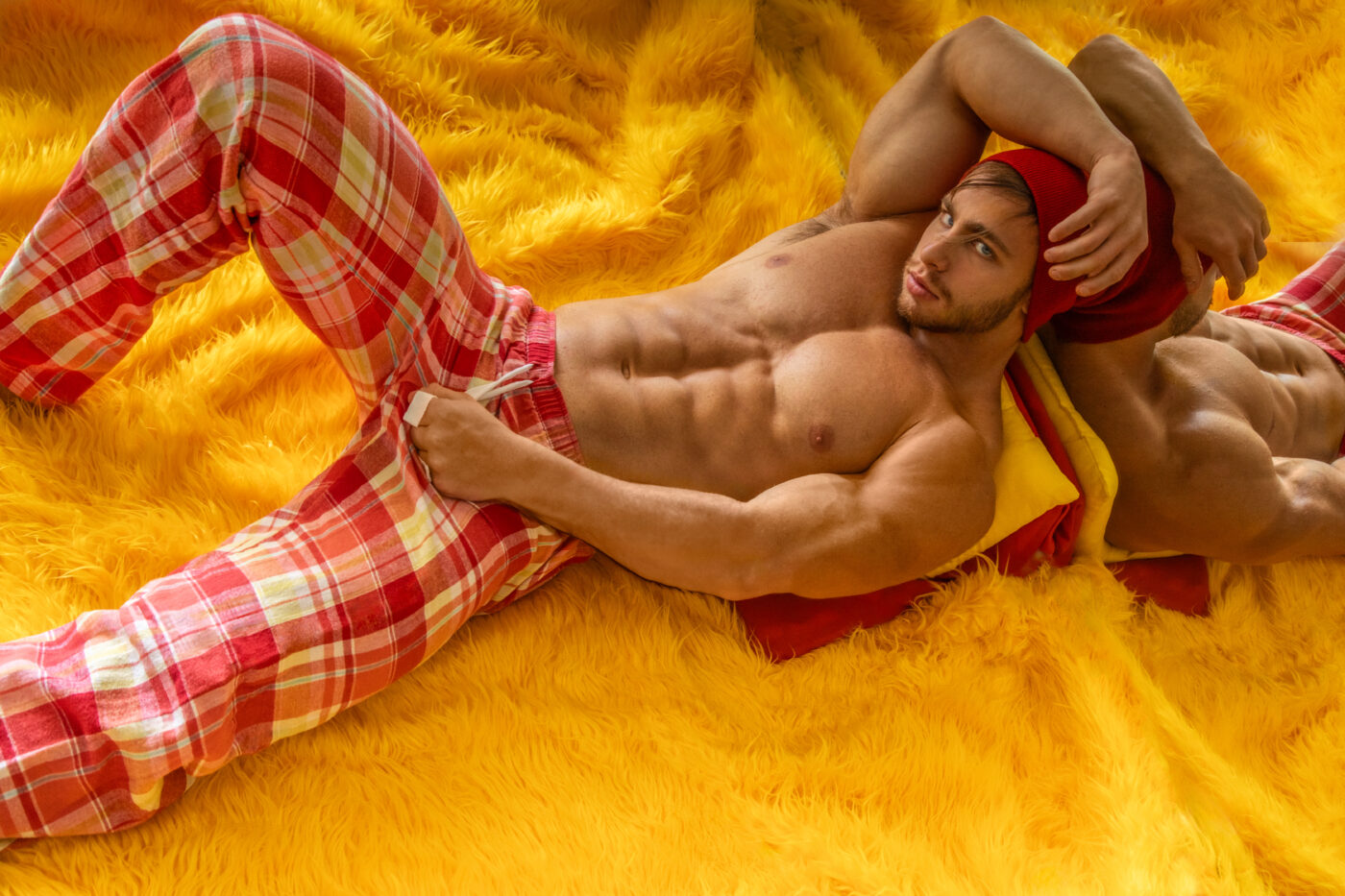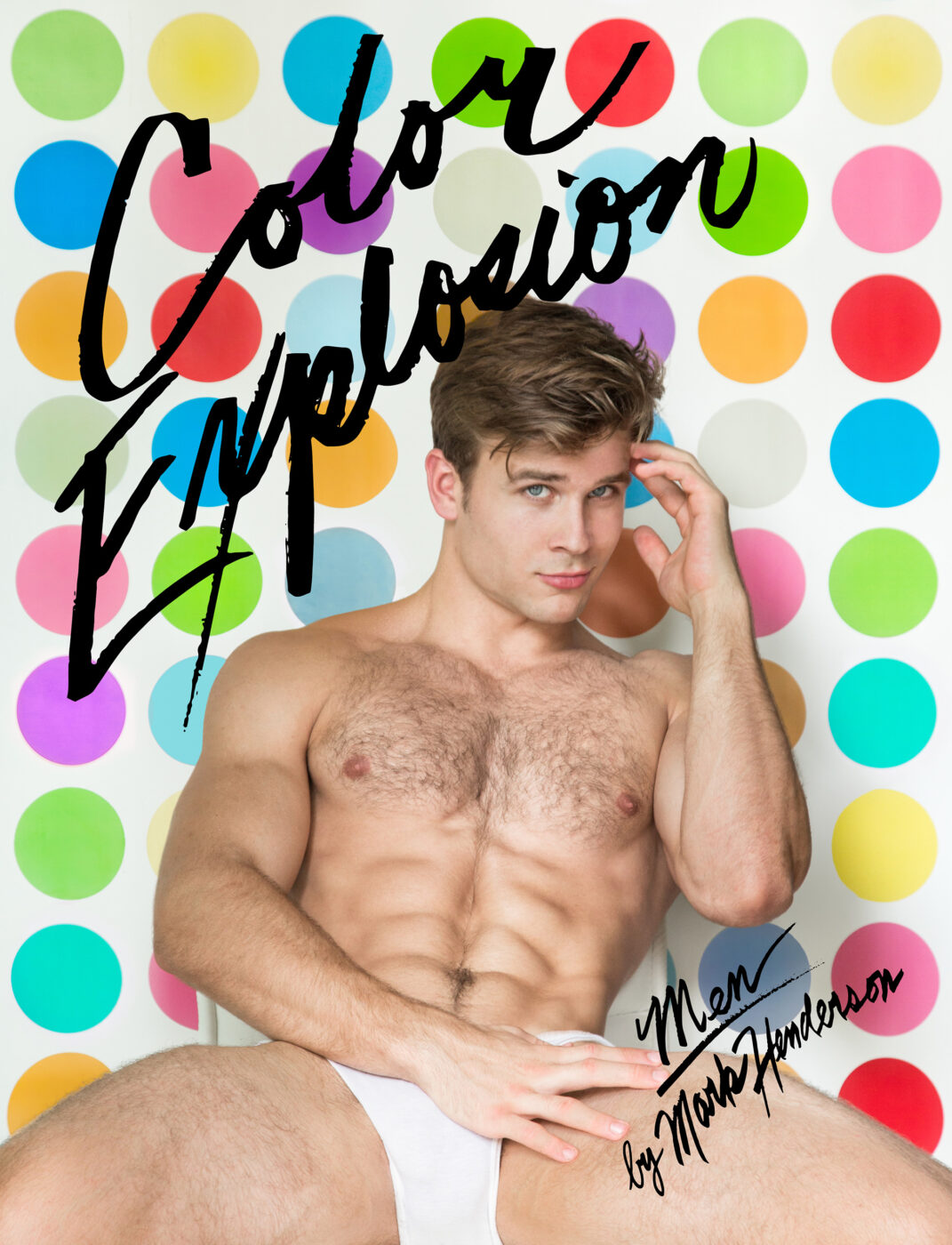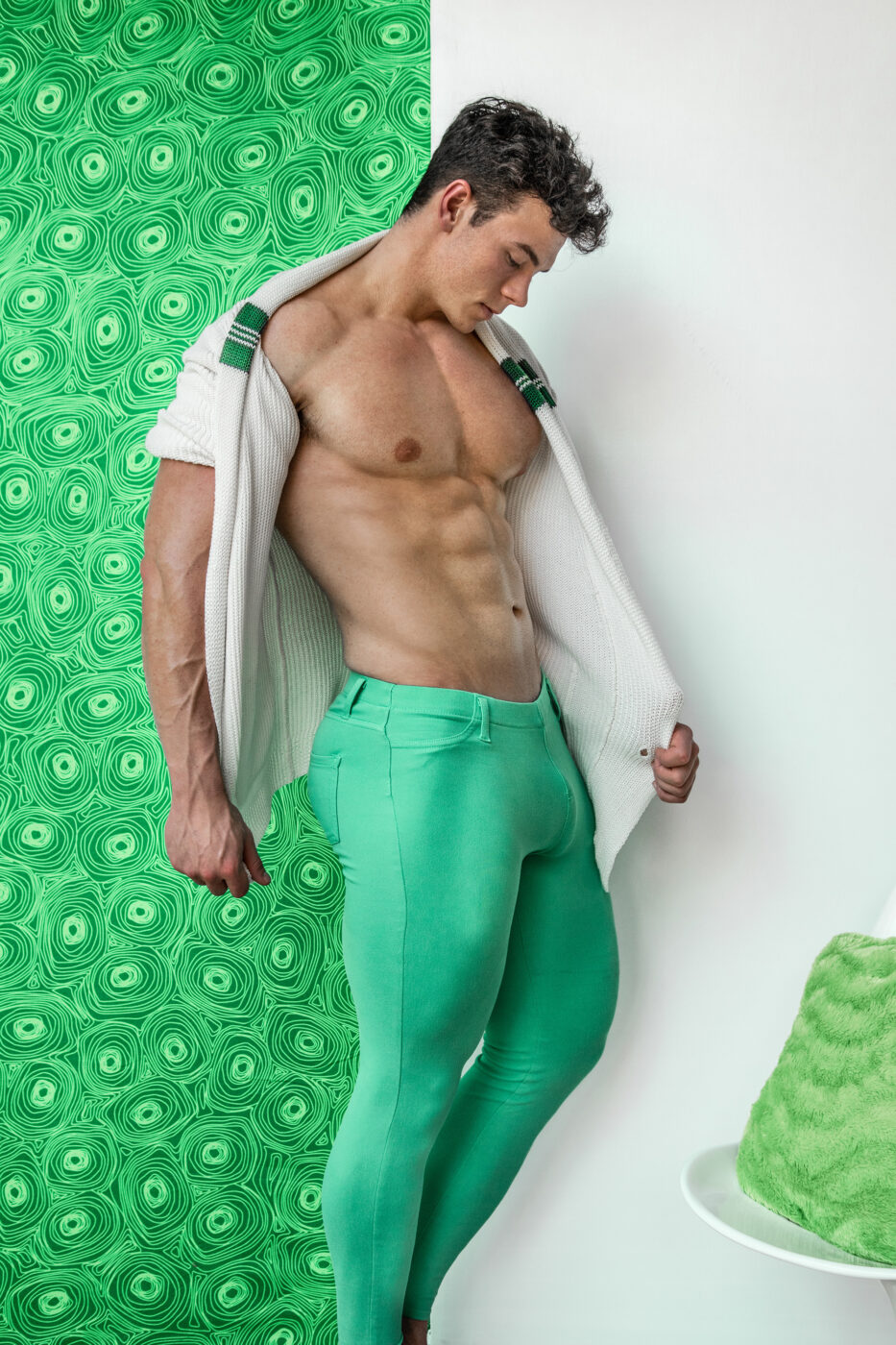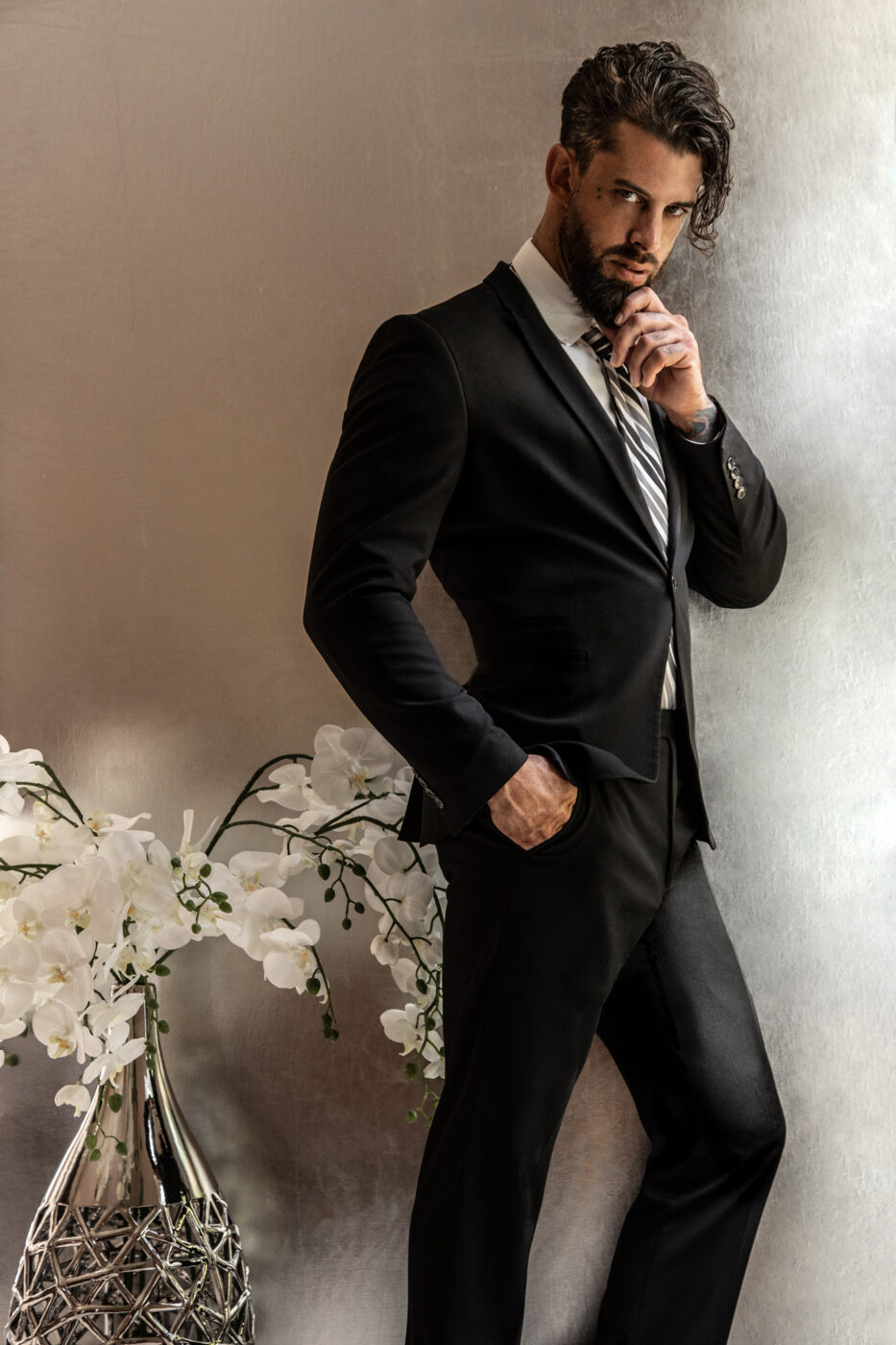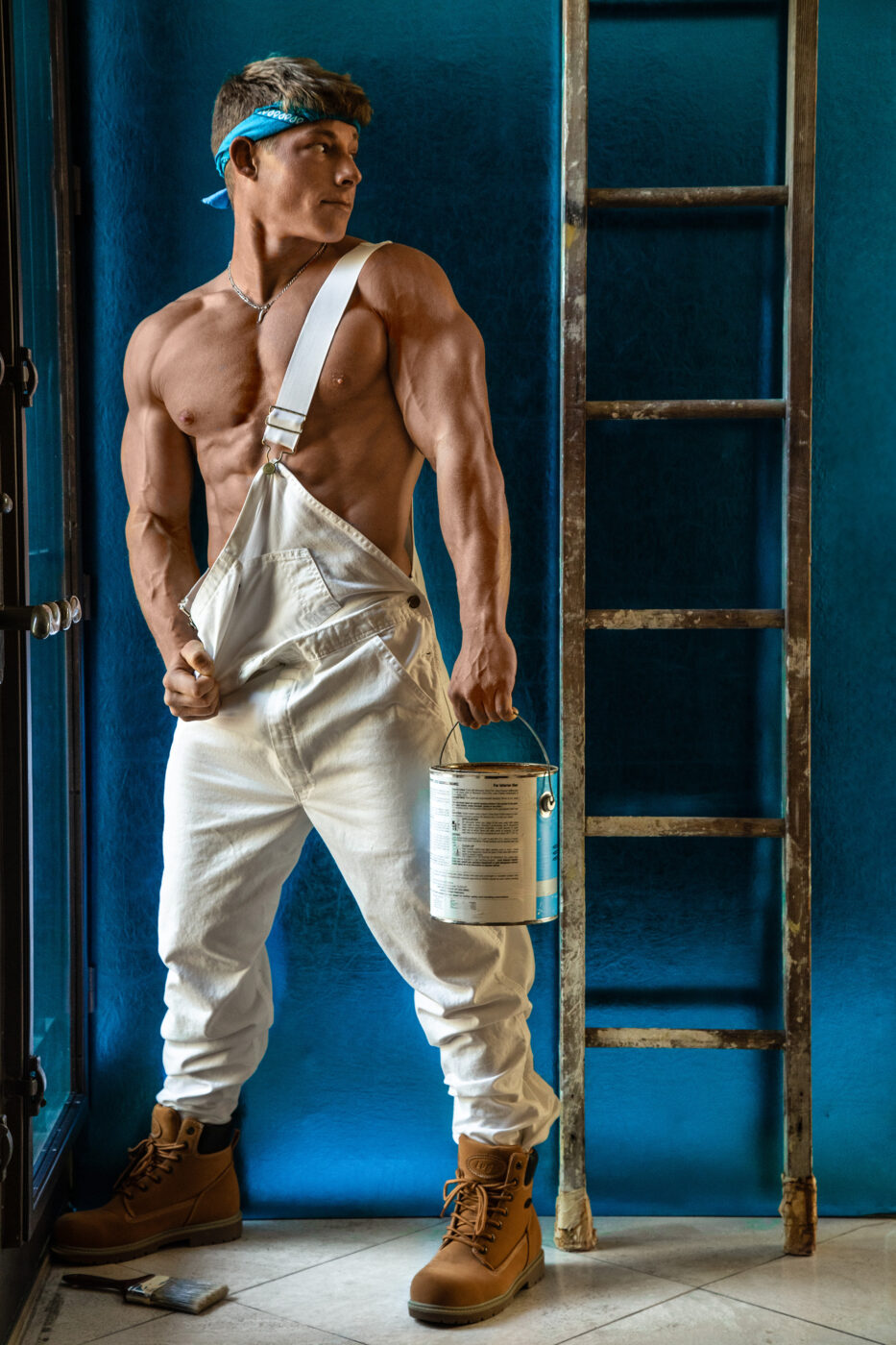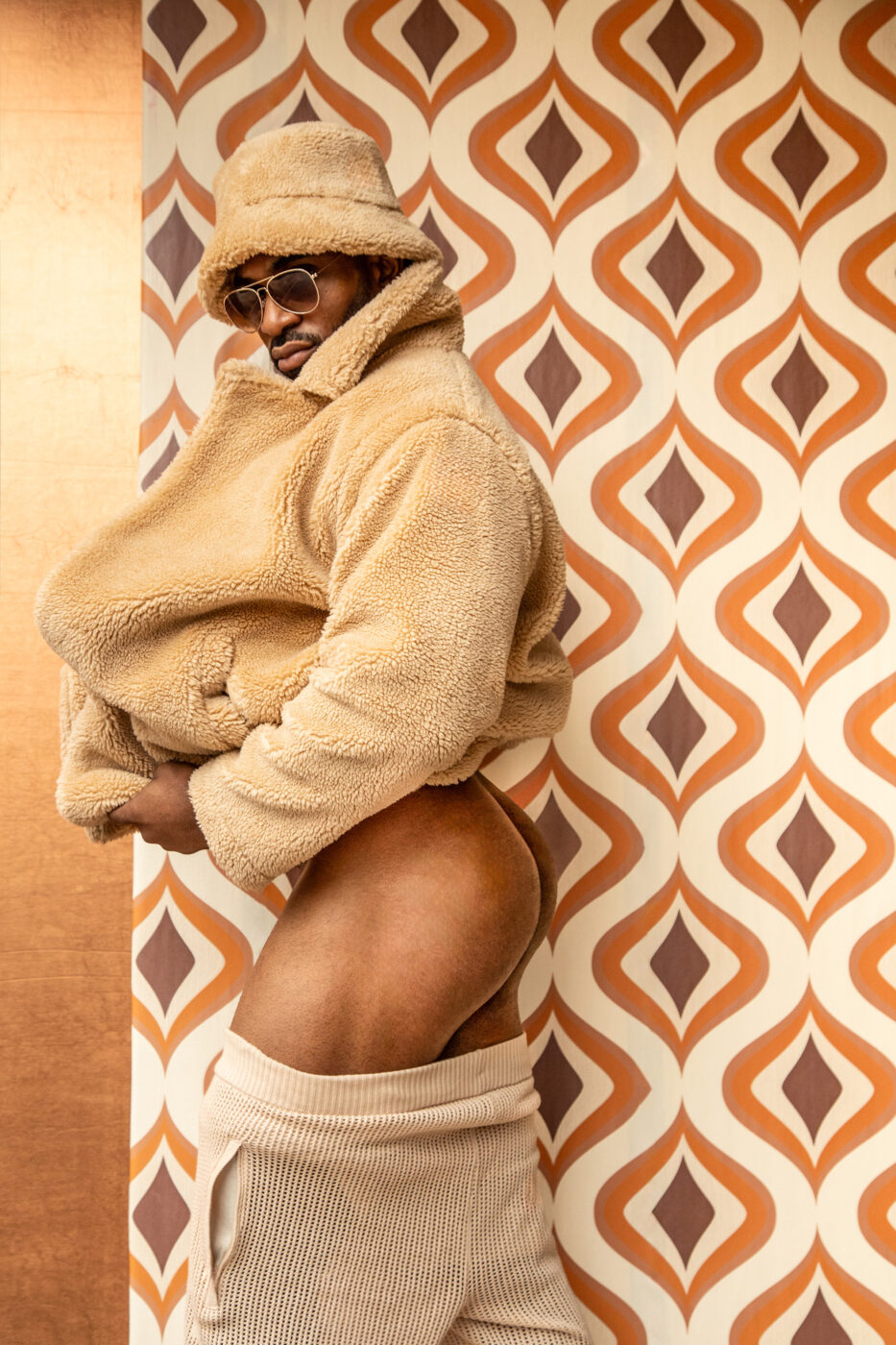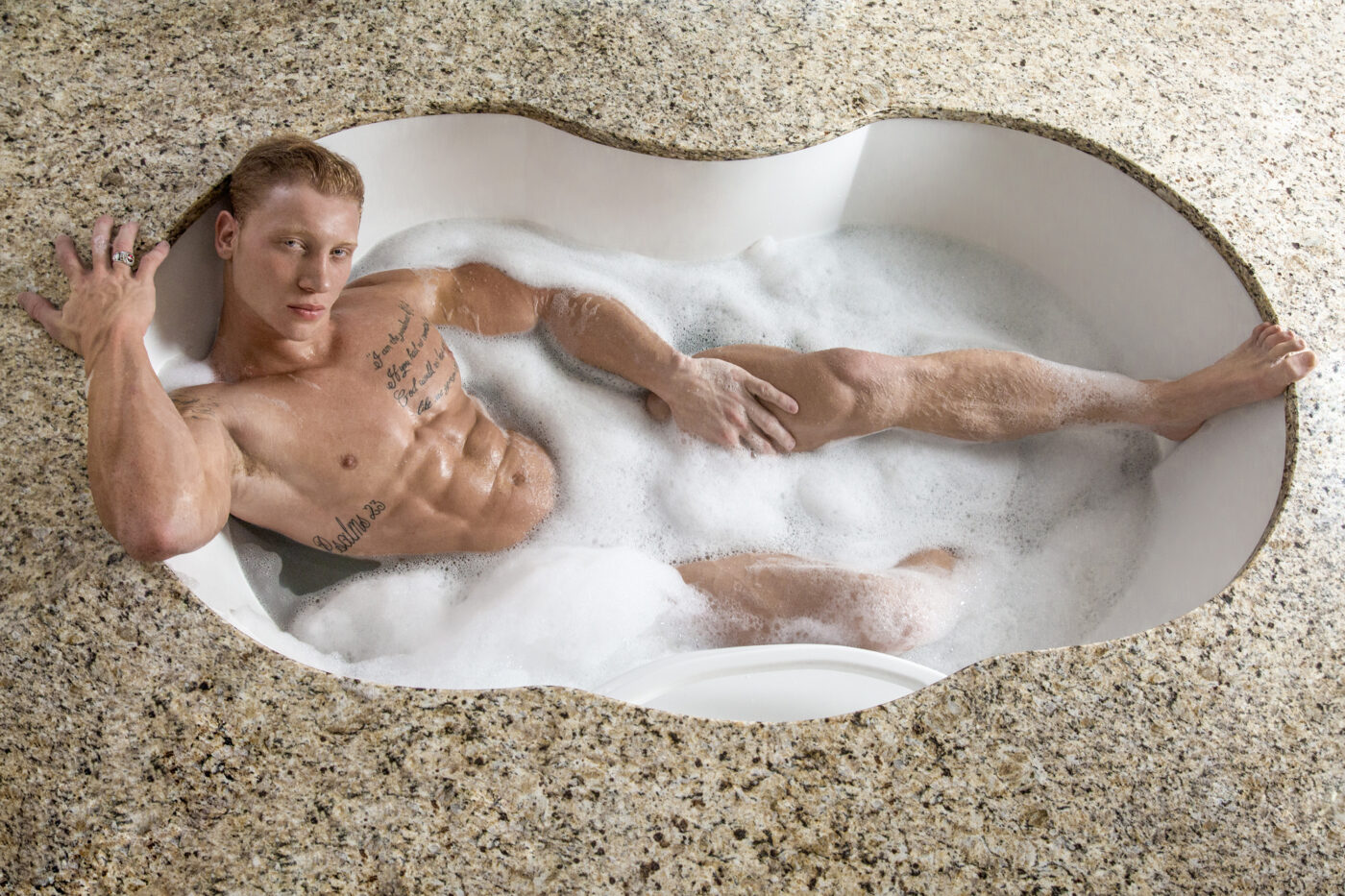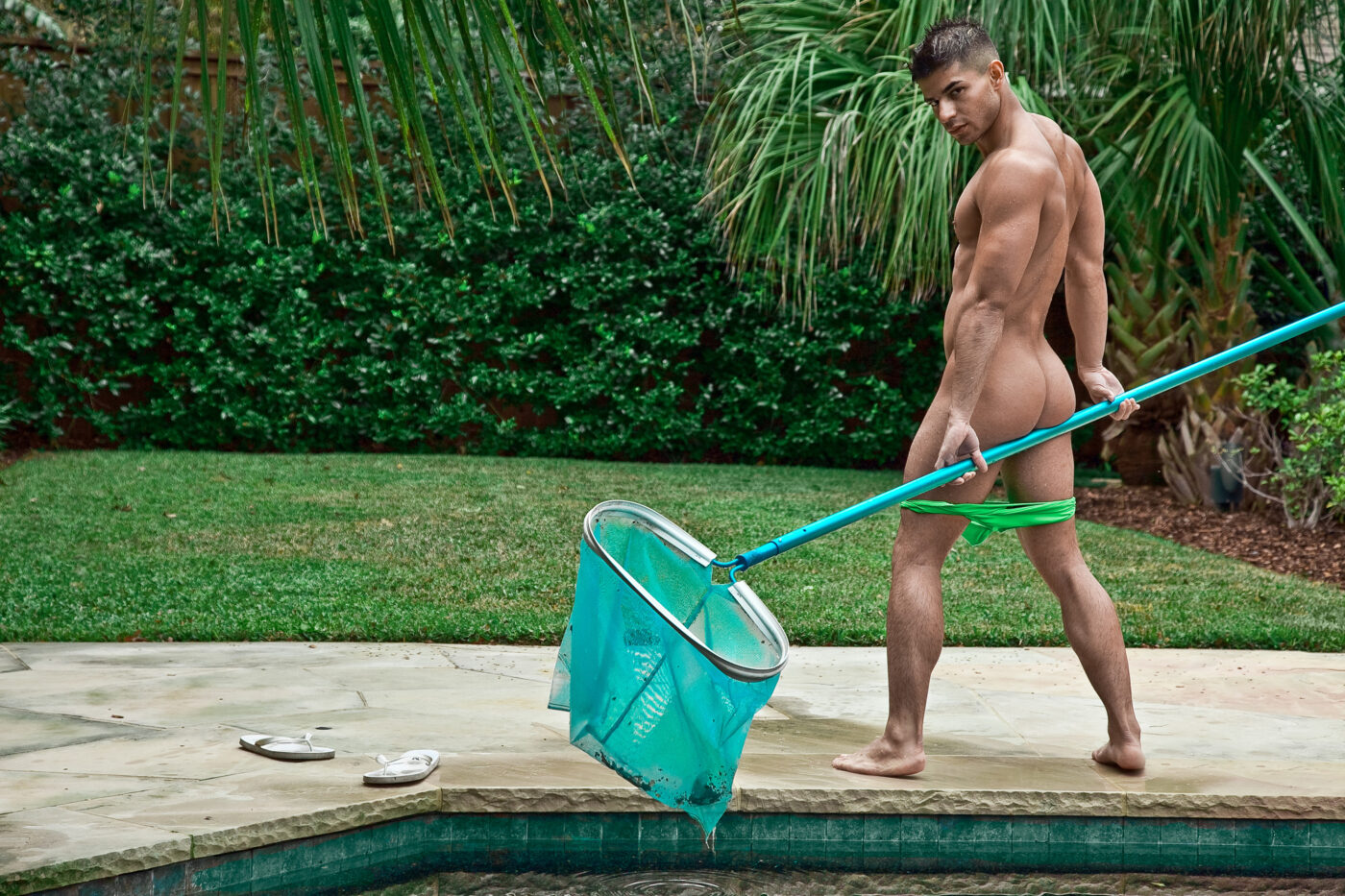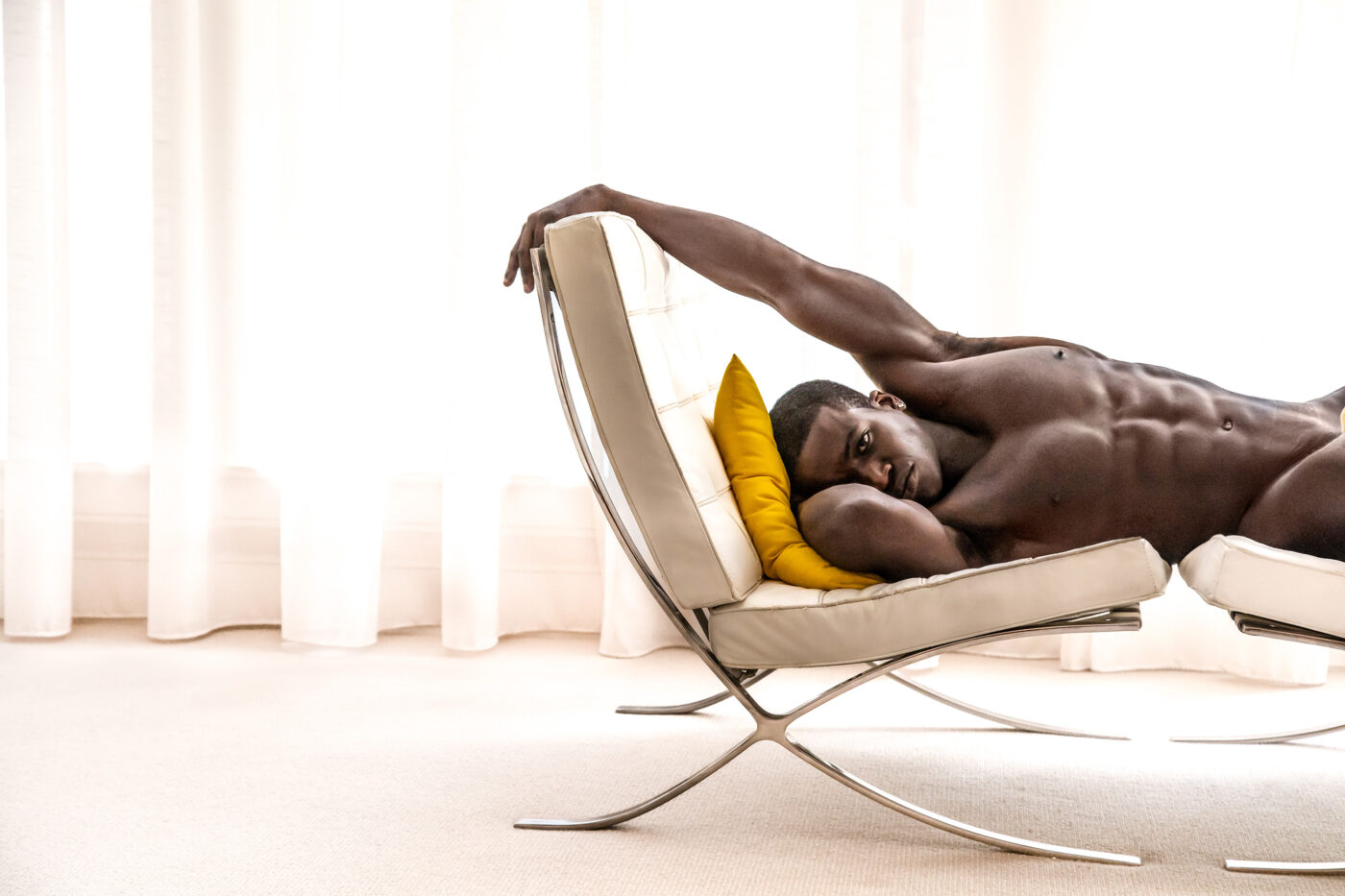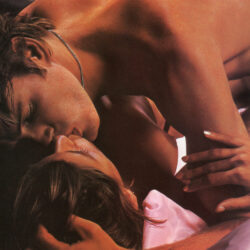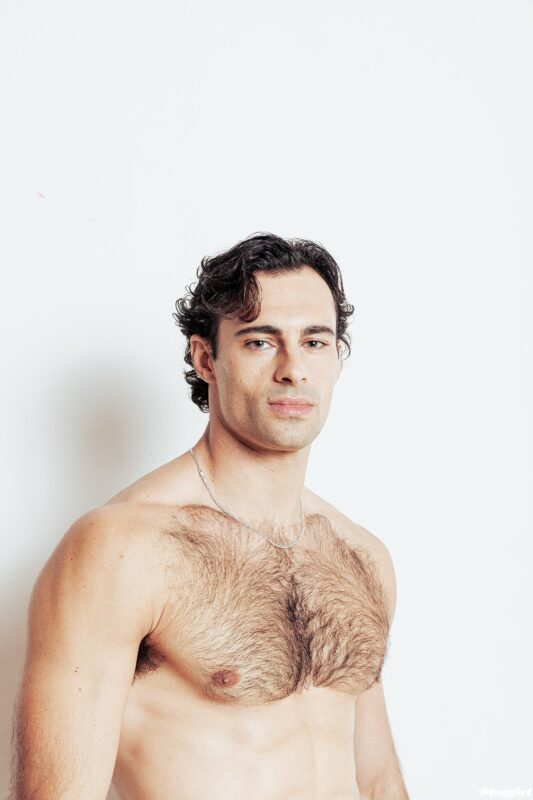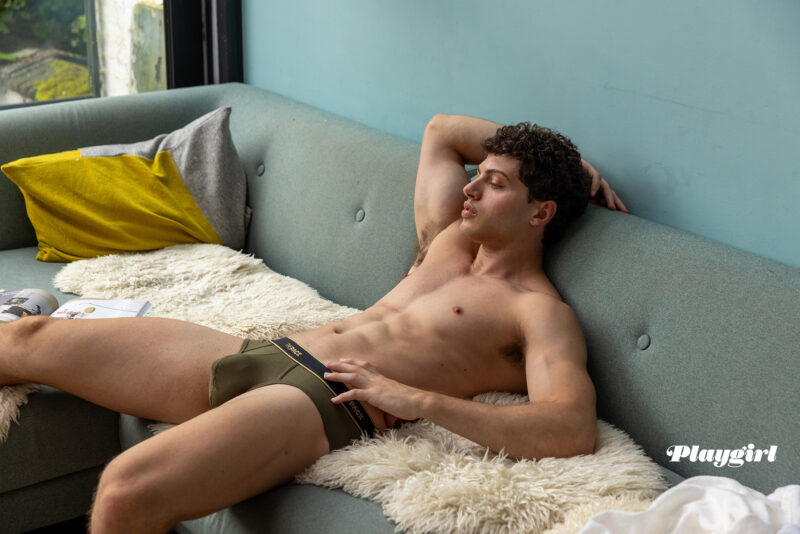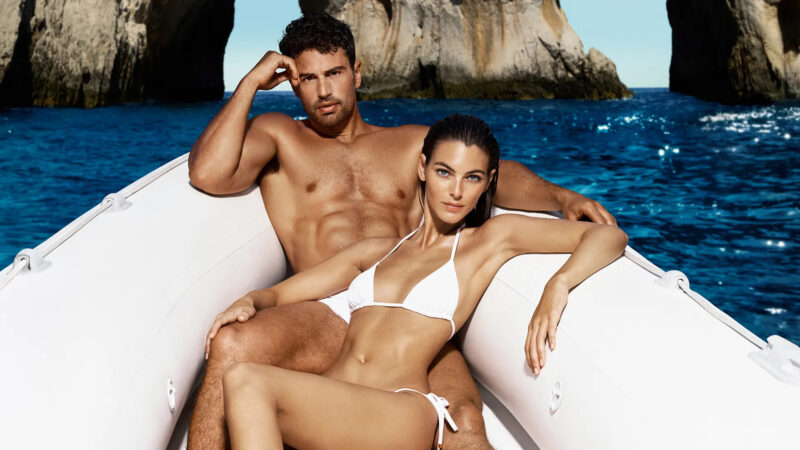“I love a world of luxurious interiors, verdant gardens, plush textiles and sculpted male physiques, awash in saturated colors,” Mark Henderson writes in his self-introduction. The expressive use of color puts Henderson in a league of his own. So does the masterful use of natural light and of “plush textiles,” wrapped around the naked body and as carefully draped as in a Mannerist painting. The titles of his eight photobooks, all dedicated to the male nude, leave no doubt regarding his aesthetic and his quest for perfection: Color Explosion (2018) Lap of Luxury (2015), Poolside Pleasures (2014), Luminosity (2012)… There are, however, a few questions we’re eager to explore with him.
PLAYGIRL. In his introduction to Luminosity, Bisonnes argues you established yourself as “a Jim French of the New Millennium.”
Jim French was an early inspiration for my work. Bisonnes doubtless connected us because of our singular focus on fit male nude physiques… images created primarily (though not exclusively) for a gay audience. But in many ways I feel my work differs significantly from his: Mr. French often worked in a studio setting with traditional studio lighting; I work almost exclusively with available light, inside my own home and garden. And a large part of his work was shot in black and white, which I never do. I enjoy black and white photography but other artists work far better in that medium than I do! I believe Mr. French considered his monochrome images his most important works, as they demonstrated his artistic aspirations and his connection to the work of earlier masters of the male nude such as Horst and George Platt Lynes. As wonderful as those images are, my personal taste veers toward the more colorful and ‘commercial’ (if you will) photographs he shot for Colt Studio… models casually posed, usually fully nude, photographed outdoors or in front of colorful backdrops. This is the Jim French who inspires and thrills me!
Any other male nude photographers you were inspired by?
Bob Mizer, whom I adore for his experimentation with color photography, props, costumes and poses. To our modern eyes his work might seem naïve or outdated, but what he was really doing was setting the tone and creating the visual language for male pin-up photography for generations of artists. And I’m so glad you mentioned Fred Bisonnes, because I feel as though his work, first with Falcon Studios and later for the early issues of the now-defunct Men Magazine, has always represented a high-water mark for me, combining an easy relaxed way of posing explicitly nude models in seemingly natural light in familiar domestic surroundings. Bisonnes’ men are exceedingly glamorous as fashion models and yet are photographed in ways that make them appear approachable and inviting, a difficult feat to achieve.

Chris White by Mark Henderson.
Let’s talk about your background as an art historian. How does art history influence your work as a photographer?
Since childhood I’ve spent much of my life reading and writing about art… traveling and spending countless hours in art museums. I have a MA in Art History and I worked for a major art institution in LA for many years. Having said that, and this may come as a surprise, I almost never consciously reference the work of the countless artists I’ve studied. But my years of visual training have undoubtedly informed my work, how I compose shots, pose models, create color relationships… It’s only later that I look at one of my photos and suddenly realize “oh yes, I posed that model like a Michelangelo ignudo from the Sistine ceiling!” or “I definitely swiped that gesture from a John Singer Sargent portrait!” So the artists of the past are always with me whether I realize it or not.
In truth, many of my biggest influences aren’t in the traditional realm of academic art history; they’re in the mid-century pin-up photographers like Bruce of LA, Mizer, French, Bisonnes and early Playgirl photographers; they’re in commercial photography in general (for its bright jewel-like colors), and fashion and Hollywood glamour portrait photography from the 40s to the 60s.
The male nude as a genre: how do you see your contribution to it?
The images I create serve primarily to please my own aesthetic, to satisfy my personal creative need to produce what I consider a beautiful, alluring, memorable photograph. I love sharing my photography through my various coffee table books and I’m honored and thrilled that others enjoy my pictures. But to be honest, I don’t often think about the ‘big picture’, how I fit into the genre of male nude photography. In general I feel as though I’m continuing the tradition (‘carrying the torch’, as it were), of the male nude pin-up photographers who started in the 50s and 60s. Personally I strive to create explicitly nude images of men that can be both visually and sexually stimulating for the viewer, both pleasing to the eye and an unashamed turn-on for the libido!

Ty Long by Mark Henderson.
What about you and Playgirl? Did the magazine have any role in your Bildung?
Playgirl has been a major influence. I bought my first copy…December 1976 (I’m really dating myself here!) I knew the magazine featured nude men but I naively assumed the men would just be shirtless… what a surprise! That was the first time I’d ever seen a penis in a photograph! Needless to say I was hooked from there on out… I subscribed for years and collected back issues when they became available. I still have a nearly complete run of the publication from the beginning to about 2006 in my archive. The glamorous, sensual photography of early Playgirl photographer Norbert Jobst should without doubt be added to my list of early influences.
Many renowned lensmen contributed to Playgirl in its five decades. Some, like Gorman, used their legal names; others, like Ritts, often hid behind a pseudonym. Did you always publish your male nudes – and your explicit male nudes in particular – as Mark Henderson?
Early on, for a brief moment, I used my company name, Edendale Studios. That’s when I shot layouts for Men and Freshmen magazines in LA. Mostly because those shoots were more about the model than me. As soon as I started working with Bruno Gmünder in Berlin I never considered using anything, but my own name, and I’ve never looked back. Anonymity seemed pointless. Whether I succeeded or failed, I wanted all the credit!
- ‘Color Explosion’ by Mark Henderson.
- ‘Lap of Luxury’ by Mark Henderson.
- Clark Reid by Mark Henderson.
- Alpha Wolfe by Mark Henderson.
- Mr. Bradford by Mark Henderson.
- Damon Bell by Mark Henderson.
- Photography by Mark Henderson.
- Kody Slater by Mark Henderson.
- Mister Tobe by Mark Henderson.
- Christian Saint by Mark Henderson.
- Nicco Sky by Mark Henderson.
- Ty Long by Mark Henderson.

